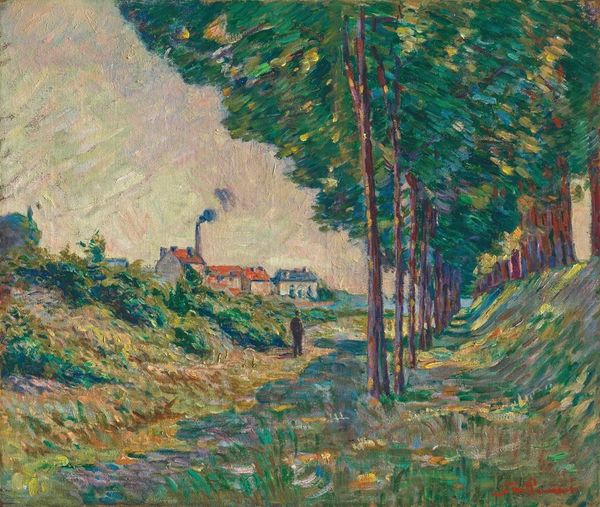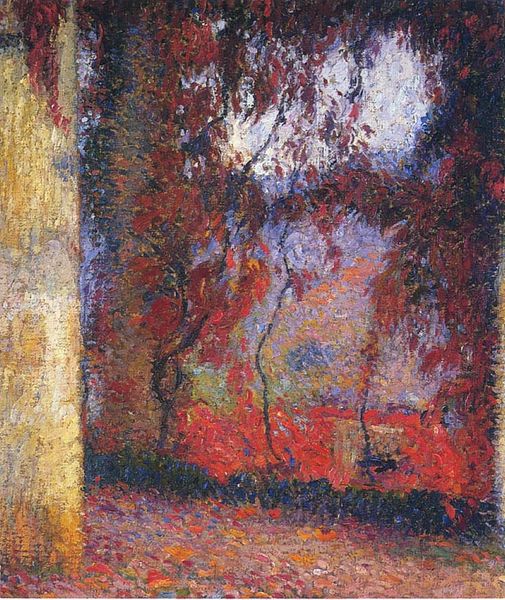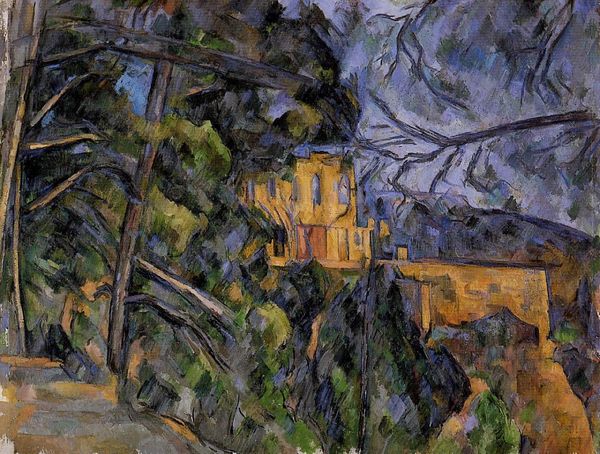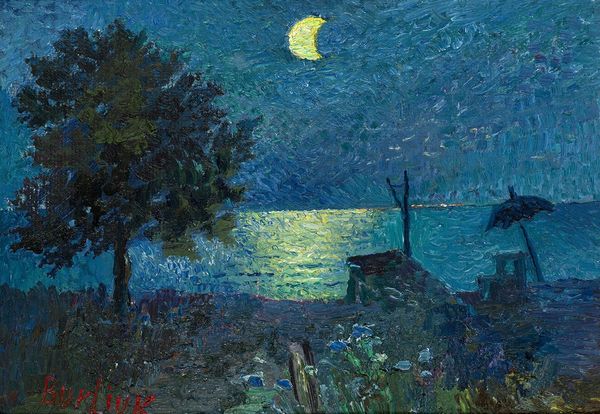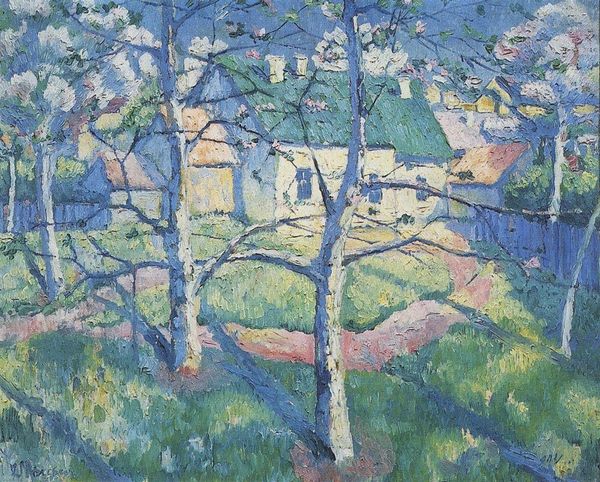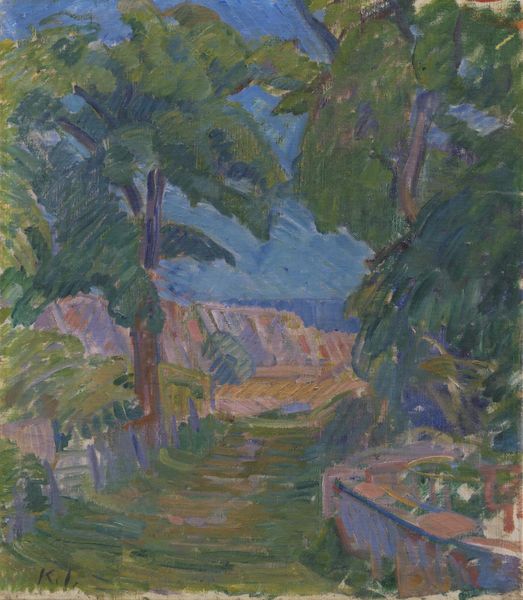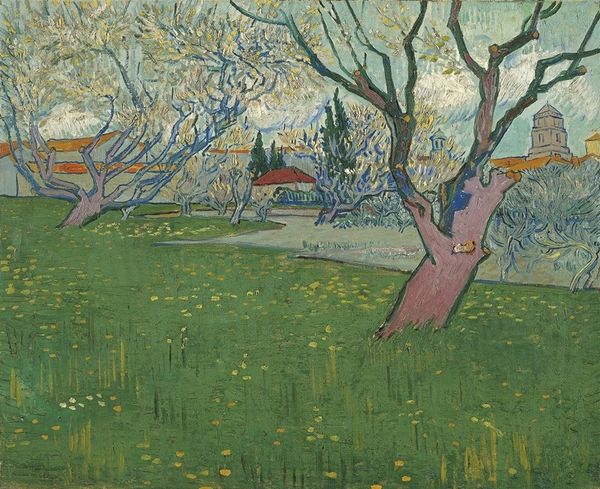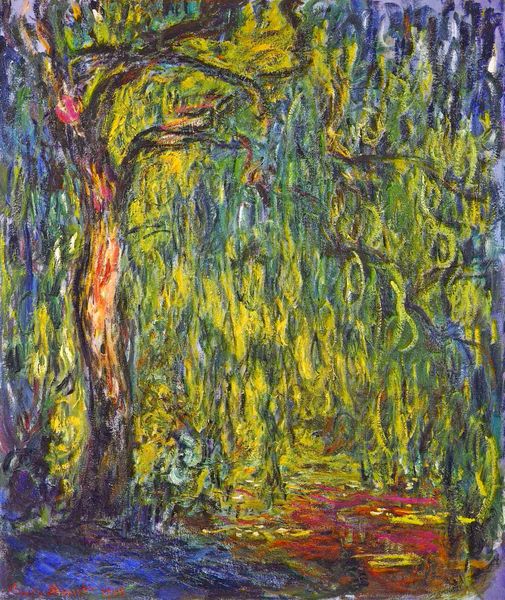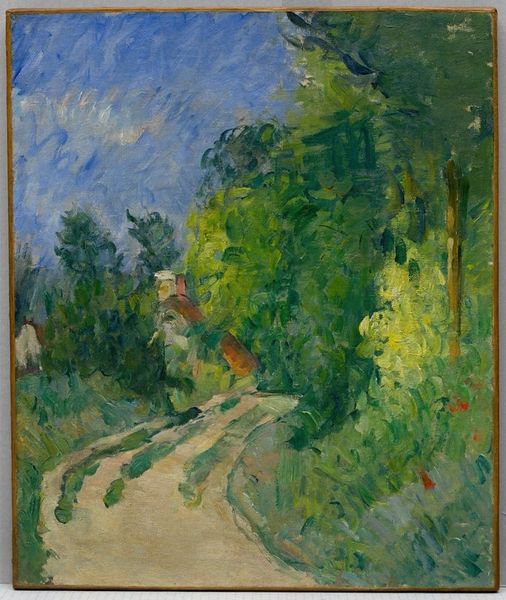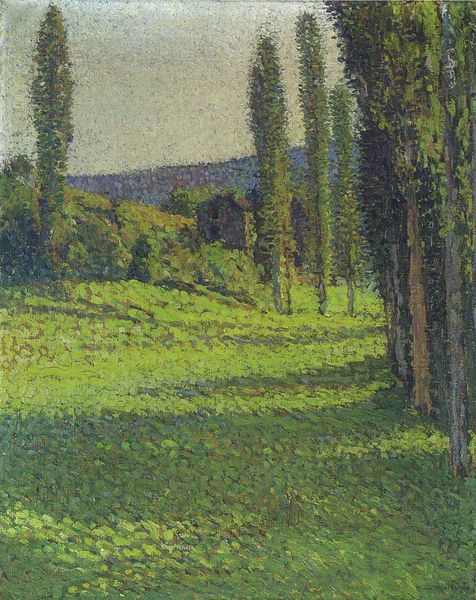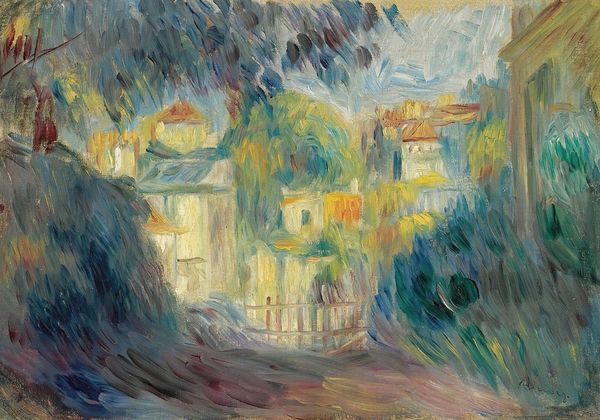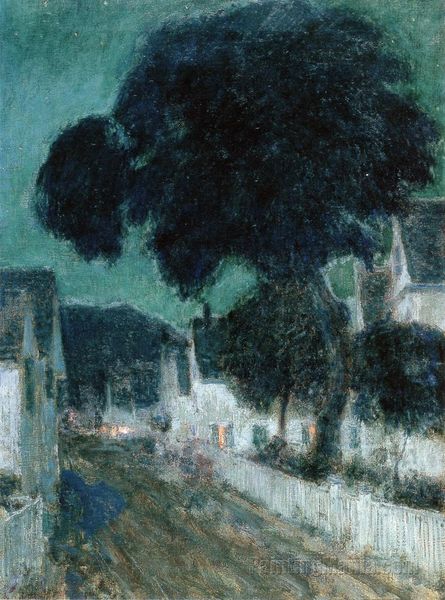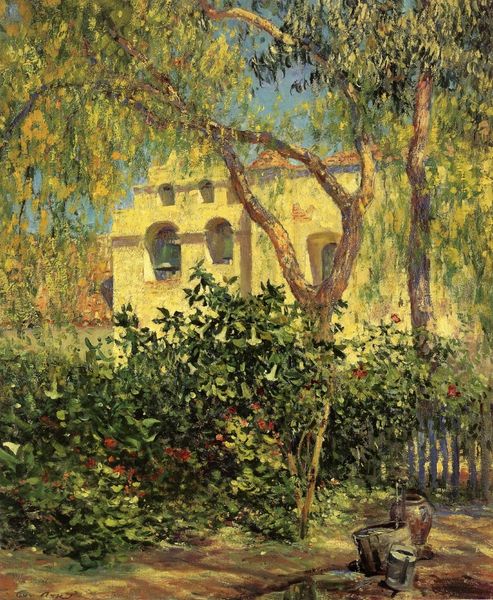
painting, oil-paint
#
painting
#
oil-paint
#
landscape
#
german-expressionism
#
oil painting
#
neo expressionist
#
expressionism
#
expressionist
Copyright: Public domain
Curator: Look at this oil painting by Alexej von Jawlensky titled "Cottage in the Woods", created in 1903. What’s your immediate impression? Editor: A lonely sort of stillness. The darkness is thick and enveloping, but there's also this contrasting sense of warmth flickering from the windows. Curator: Notice how Jawlensky applies the paint. He's using these short, deliberate brushstrokes, building up layers to create texture. Think about the availability of vibrant, synthetic pigments in this period and how that impacted an artist like Jawlensky. The material production itself enabled a kind of emotional intensity we see in this piece. Editor: Absolutely. The application contributes to this mood, but I also can’t help but see it as reflective of its socio-political context. Early 20th century Germany wasn't exactly a picnic, especially with rising nationalism and anxieties about modernity. That oppressive darkness, for me, speaks to a yearning for retreat, for an escape from the public sphere. And that flickering light—maybe a sign of hope, or resilience, within the domestic space? Curator: I see that tension too. While we're considering social implications, note that the art market increasingly separated artistic labor from functional production. Jawlensky is making a commodity for aesthetic contemplation, while this cottage is quite possibly home to a class doing practical labor. Editor: Precisely, it’s not just about escaping anxieties, but reflecting class disparities. Who is afforded the privilege to retreat into idealized nature versus who is working it? And to take that even further, consider how landscape paintings during this era often glossed over the exploitation inherent in resource extraction. Curator: I agree that those tensions are undeniably present. What stays with me is Jawlensky's treatment of paint—how he takes this material, and through physical manipulation and calculated composition creates an affect that speaks to anxieties beyond those readily addressed through other means. Editor: It leaves us contemplating not just the beauty or technique, but also the complicated world that shaped both the artist and their creation. Curator: Right. So the means by which Jawlensky constructed that feeling, in and of itself, makes a statement on social issues.
Comments
No comments
Be the first to comment and join the conversation on the ultimate creative platform.
